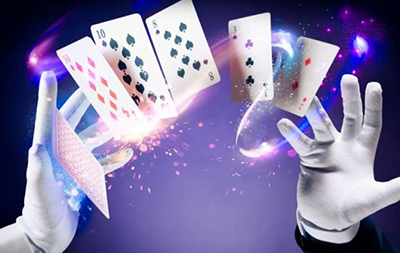What is the Indian version of rummy?
Views: 136 Update date: Dec 19,2023
Card games have been a source of entertainment and strategic prowess across cultures for centuries. One such illustrious variant is Indian Rummy, a captivating adaptation of the globally recognized Rummy card game.
Indian Rummy, also known as Paplu, has a rich history that intertwines with the evolution of Rummy globally. Originating from the traditional game of Conquian in Mexico, it made its way to India, absorbing cultural influences and regional nuances. Over time, Indian Rummy has become a dynamic and strategic card game that continues to evolve.
Dealing the Cards
Each player receives 13 cards, and the remaining cards form the draw pile.
Forming Sets and Sequences
Players strategically arrange their cards into sets and sequences, aiming for a balanced and winning hand.
Discard and Draw
Turns involve drawing a card from the draw or discard pile and discarding a less strategic card. The process continues until a player declares.
Scoring
Points are tallied based on the cards left in the losing player's hand, with face cards carrying higher values.
Embracing the digital era, Indian Rummy has seamlessly transitioned to online platforms, providing enthusiasts with a convenient and engaging virtual space.
Indian Rummy, also known as Paplu, has a rich history that intertwines with the evolution of Rummy globally. Originating from the traditional game of Conquian in Mexico, it made its way to India, absorbing cultural influences and regional nuances. Over time, Indian Rummy has become a dynamic and strategic card game that continues to evolve.
Distinctive Features of Indian Rummy
Indian Rummy is typically played with 13 cards per player, setting it apart from other Rummy variations.
The introduction of 'Jokers' and 'Wild Cards' adds an element of unpredictability, requiring players to adapt their strategies on the fly.
An essential aspect of Indian Rummy is the emphasis on forming a 'Pure Sequence,' showcasing a player's ability to arrange cards without the use of Jokers.

How to Play Indian Rummy
Dealing the Cards
Each player receives 13 cards, and the remaining cards form the draw pile.
Forming Sets and Sequences
Players strategically arrange their cards into sets and sequences, aiming for a balanced and winning hand.
Discard and Draw
Turns involve drawing a card from the draw or discard pile and discarding a less strategic card. The process continues until a player declares.
Scoring
Points are tallied based on the cards left in the losing player's hand, with face cards carrying higher values.
Why Indian Rummy?
Beyond its gaming aspect, Indian Rummy holds cultural significance, often being a centerpiece during festivals and social gatherings.
The game demands a blend of skill and strategic thinking, making it more than a mere game of chance.
Embracing the digital era, Indian Rummy has seamlessly transitioned to online platforms, providing enthusiasts with a convenient and engaging virtual space.



